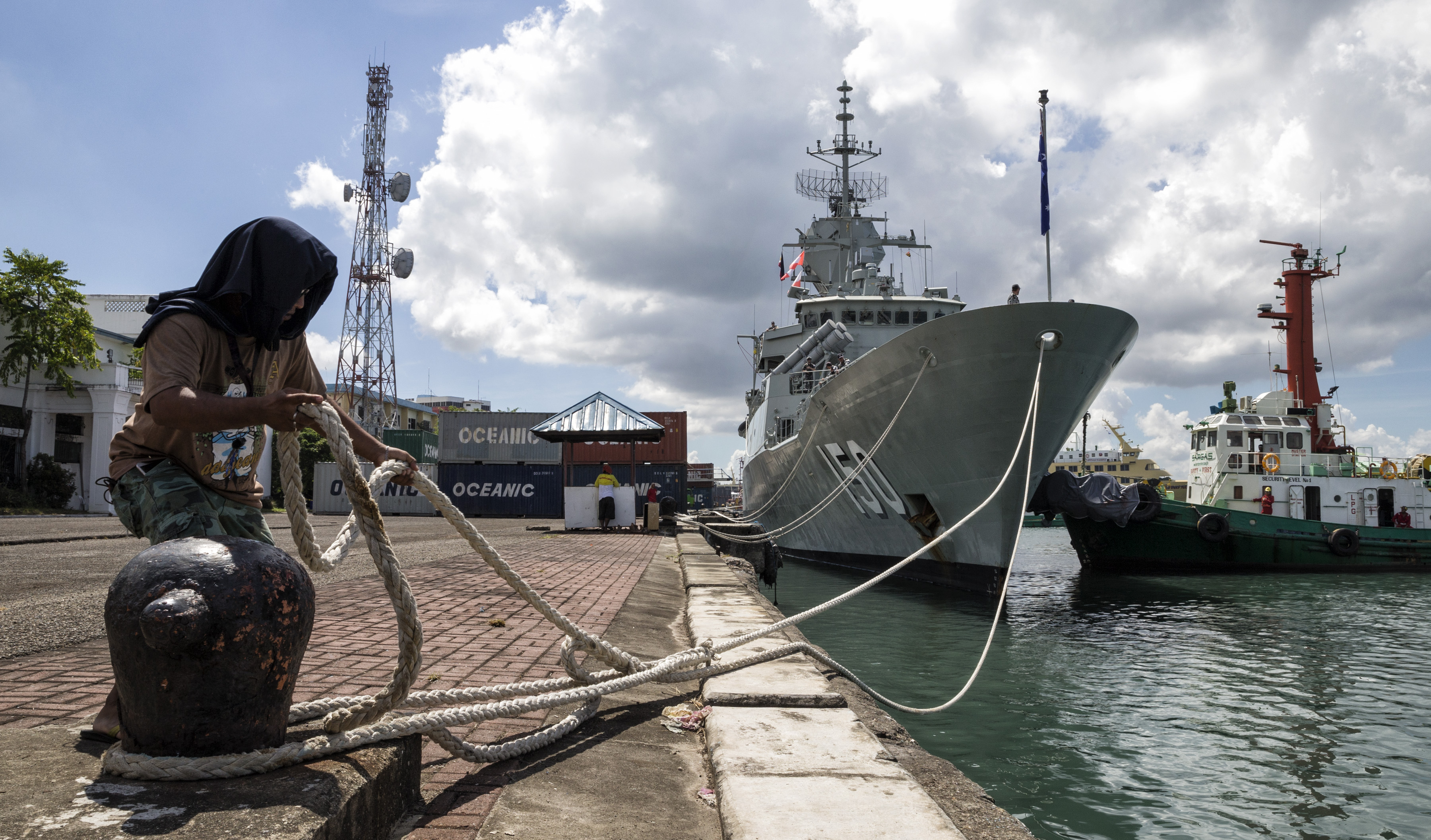A joint industry team – comprised of Saab Australia, BAE Systems and Thales Australia – Navy and Defence Science and Technology have proved critical to delivering next-generation anti-submarine sonar capabilities to the Royal Australian Navy’s fleet of Anzac Class frigates.
To continue reading the rest of this article, please log in.
Create free account to get unlimited news articles and more!
Upgrades to the Spherion B sonar processing systems in the Navy’s Anzac Class frigates under SEA 1408 Phase 2 is almost complete. SEA 1408 Phase 2 replaced the existing sonar processing system with the sovereign designed Broadband Sonar Advanced Processing System (BSAPS) while still utilising the existing Spherion B Hull Mounted Sonar Wet End.
The BSAPS was jointly developed in a collaboration between Defence Science and Technology (DST), Saab Australia, BAE Systems and Thales Australia.
Deputy Director Combat Systems, Commander Danielle Radnidge said the BSAPS project began life as a submission from DST through the Defence Industry Realisation Fund, a precursor to the Defence Innovation Hub.
Responding to the emerging threat situation, a requirement was identified for a system that was more suited to modern submarine and torpedo threats expected to emerge over the lifespan of the Anzac Class frigate – to date, six of the eight Anzac Class frigates have been upgraded.
“The submission was picked up and commercialised by Thales Australia, and showcases Australia’s world class ability to convert science and technology concepts into successful commercial enterprises,” CMDR Radnidge said.
Among the many advantages offered by SEA 1408 Phase 2 are a significant improvement in sonar passive capability, a greater level of sonar and combat management system integration, improved levels of sonar functionality and significant improvements in equipment reliability.
The new sonar system has been integrated with the 9LV combat management system and had been successfully demonstrated at sea over a number of years.
This technology has delivered a significantly advanced anti-submarine warfare and torpedo self defence capability to Navy’s Anzac Class frigates and provides Navy with one of the most advanced, sovereign Hull Mount Sonar capabilities in the world, providing exceptional underwater awareness for our frigates.
The upgrade project management occurred through the Warship Asset Management Agreement Alliance with the Anzac Ships Program Office and SEA 1408 Project Office.
The Anzac Class is based on the German Meko 200 frigate design with eight ships constructed in Australia for the Royal Australian Navy.
Anzac Class is a long-range frigate capable of air defence, surface and undersea warfare, surveillance, reconnaissance and interdiction. Combat capabilities have been significantly improved under the Anti-Ship Missile Defence upgrade program, a world class program that provides an enhanced sensor and weapons systems capability.
The upgrade showcases Australian design and integration capability, with new Phased Array Radar technology designed by CEA Technologies in Canberra, upgrades to combat systems performed by Saab Systems in South Australia, and platform integration design by BAE Systems in Victoria.
The ships are fitted with an advanced package of air and surface surveillance radars; omni-directional hull mounted sonar and electronic support systems that interface with the state-of-the-art 9LV453 Mk3E combat data system. They can counter simultaneous threats from aircraft, surface vessels and submarines.
Navy's latest multi-role MH-60R Seahawk helicopter can be embarked on the FFH frigates. The 'Romeo' capabilities include enhanced anti-submarine, anti-surface warfare and search and rescue capabilities. Embarkation of a helicopter also provides the ship with the capability to deliver air-launched missiles and torpedoes.
Several Anzac Class frigates are currently undergoing the Anzac Mid-Life Capability Assurance Program (AMCAP) upgrade at the Australian Marine Complex in Henderson, Western Australia. The upgrade is being performed by the Warship Asset Management Agreement (WAMA) Alliance and will include the replacement of the Long Range Air search radar, IFF (identification, friend or foe) and secondary surveillance radar capabilities.
Anzac will also undergo a platform systems obsolescence program to improve platform reliability and maintainability. Work will also be done to improve the ship’s habitability for the crew. Also, an upgrade to the ship’s communications systems will resolve a number of obsolescence issues.

 Login
Login







